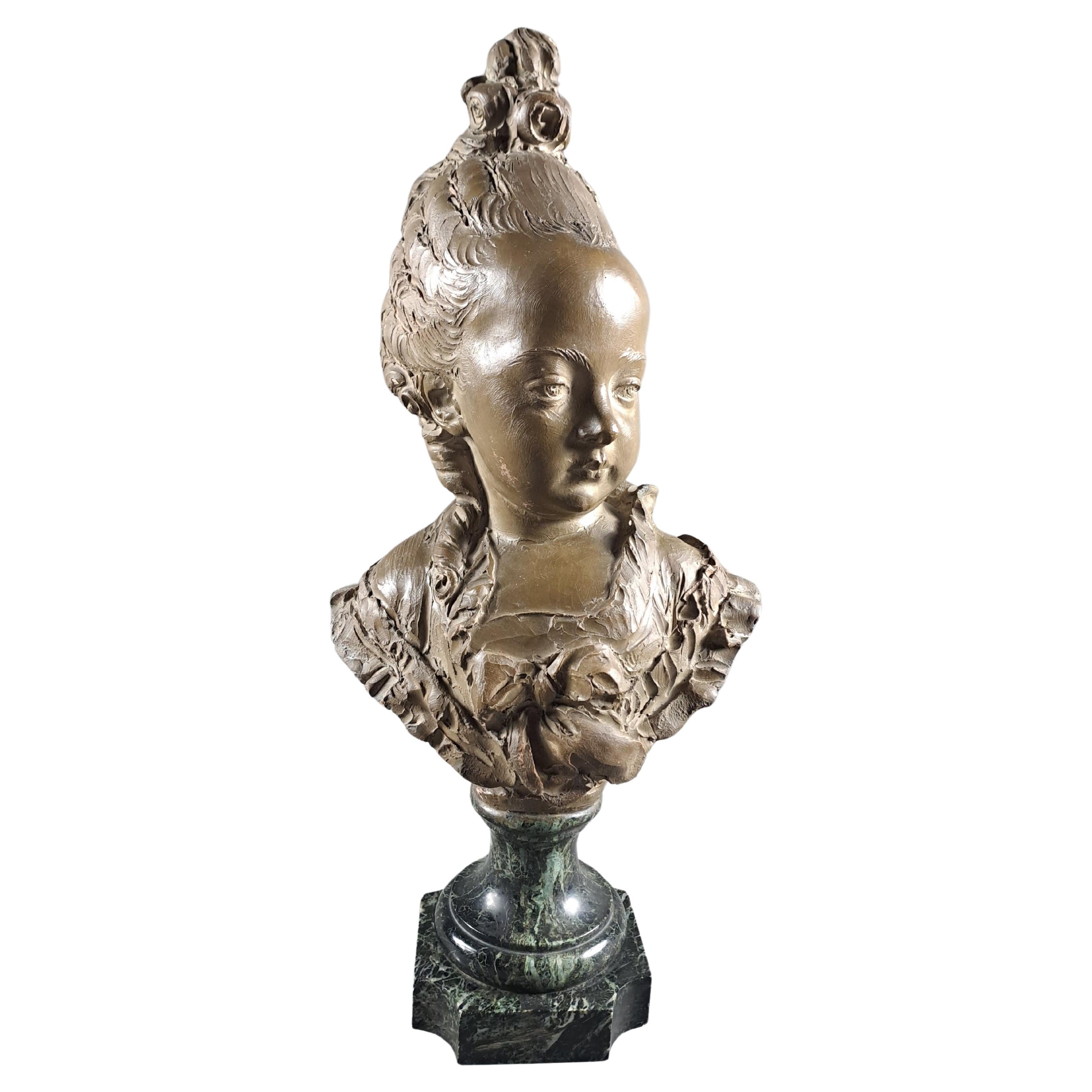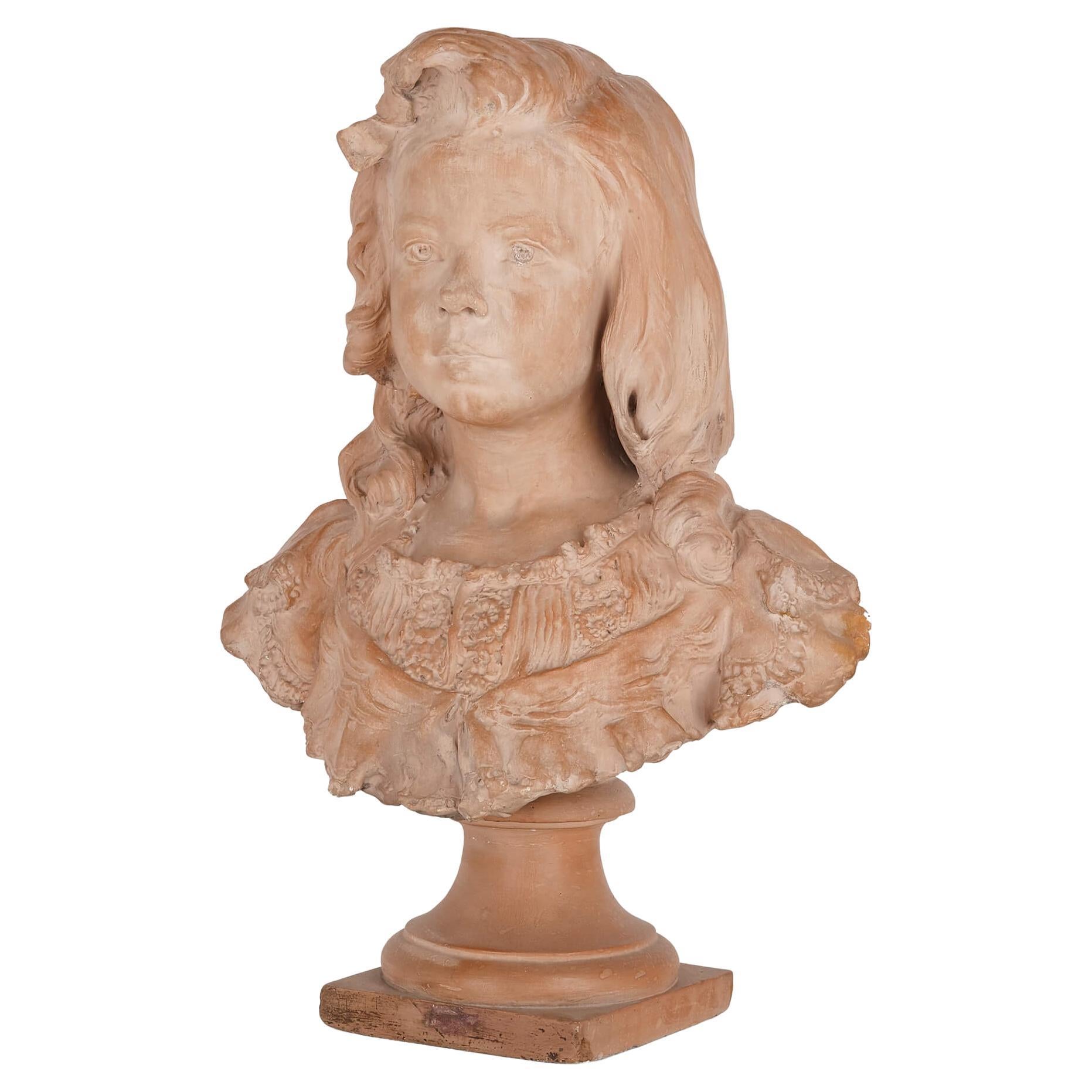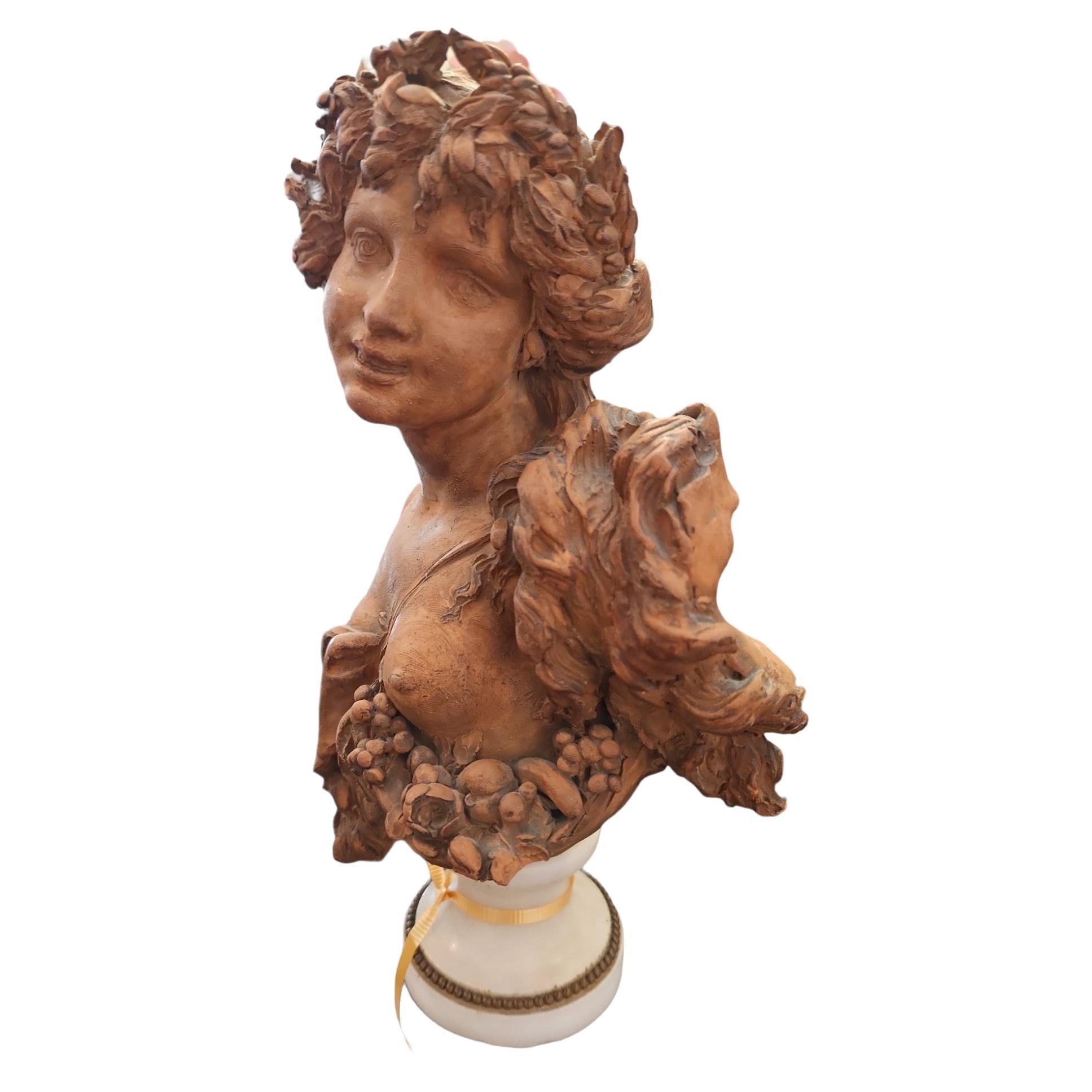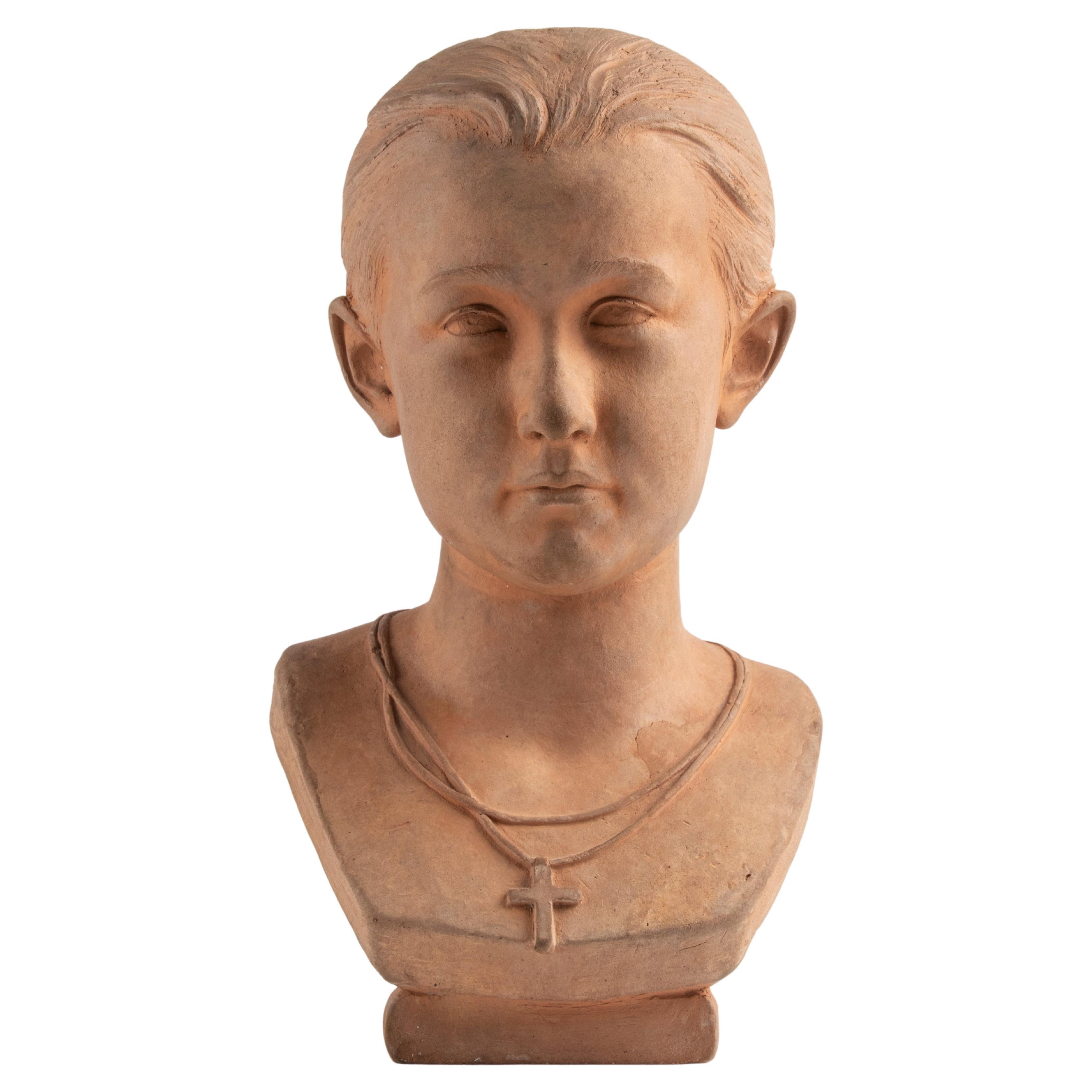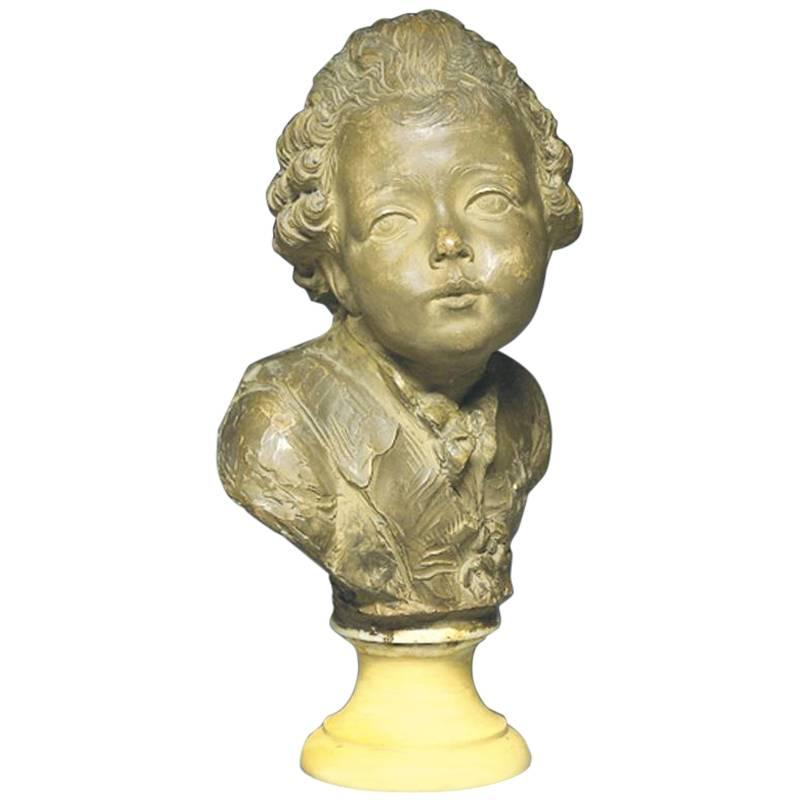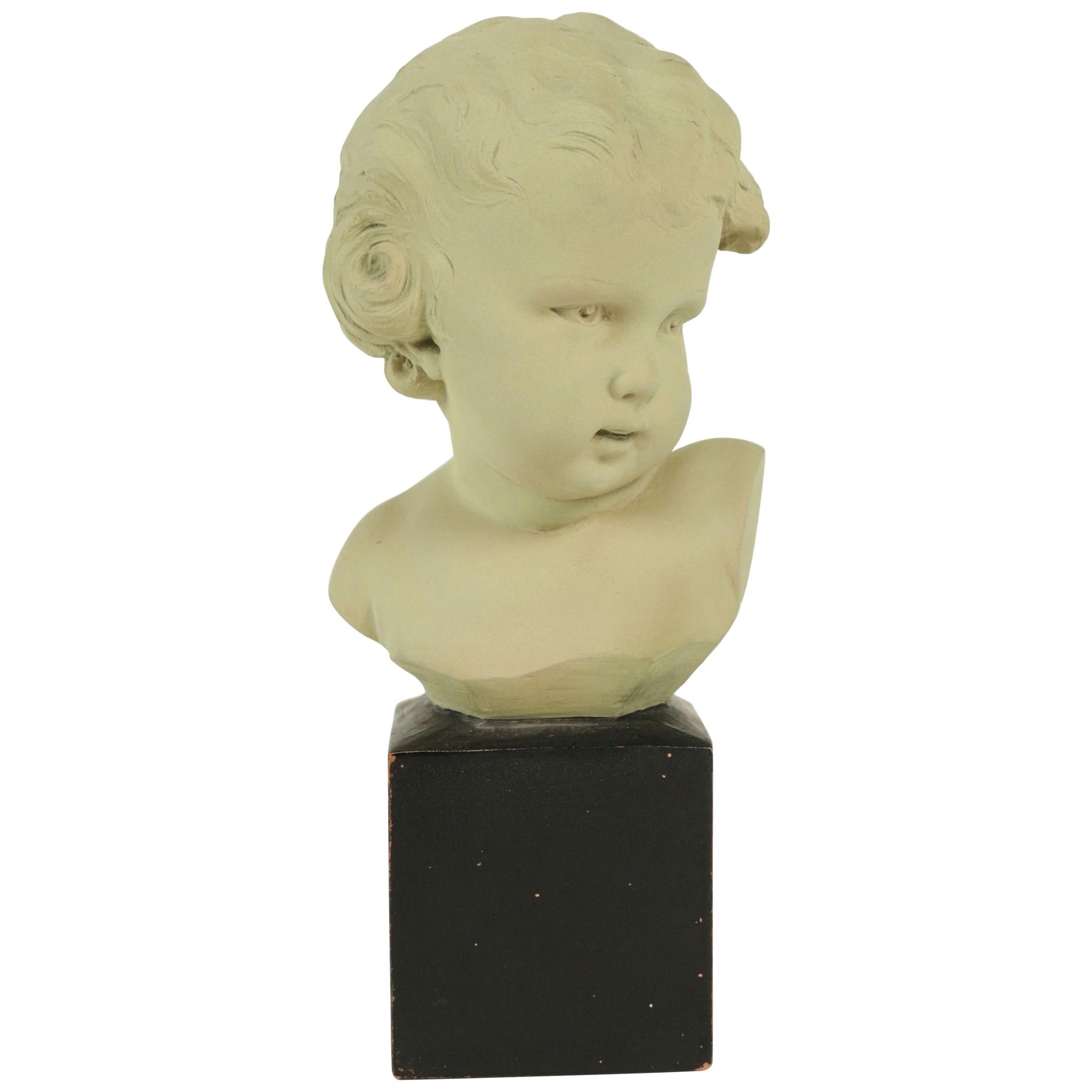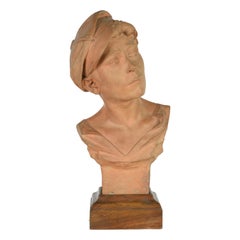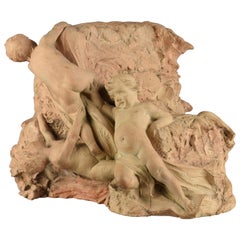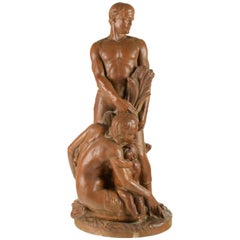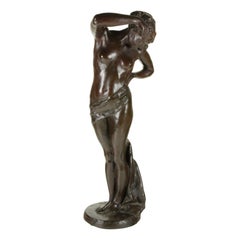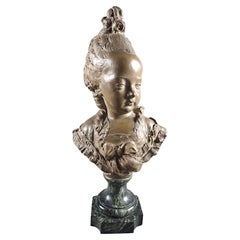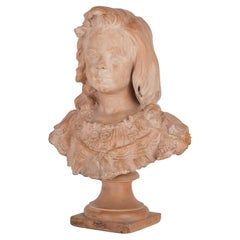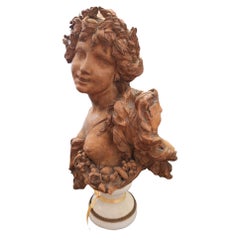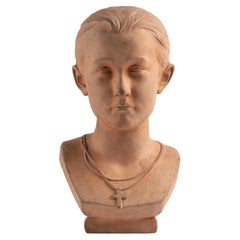Items Similar to 19th Century Terracotta Bust of a Young Girl Signed by Andrea Flaibani
Want more images or videos?
Request additional images or videos from the seller
1 of 11
19th Century Terracotta Bust of a Young Girl Signed by Andrea Flaibani
$2,635.92
£1,962.27
€2,200
CA$3,610.55
A$4,015.72
CHF 2,096.88
MX$48,866.98
NOK 26,780.38
SEK 25,115.27
DKK 16,747.83
Shipping
Retrieving quote...The 1stDibs Promise:
Authenticity Guarantee,
Money-Back Guarantee,
24-Hour Cancellation
About the Item
Andrea Flaibani Friulian sculptor (Udine, Italy 1846 - Udine, Italy 1897)
Terracotta
Measures: Height 38 cm
Width cm 23
Base diameter cm 15
Weight kg approx. 5.5.
As a young man he was a carving carpenter. For his artistic vocation he was then sent to the Academy of Fine Arts in Venice. He executed marble busts of different characters of the time, several medallions and some cemetery mausoleums. He is the author, among other things, of the statue representing the Homeland of Friuli placed on the midday corner of the municipal loggia of Udine. In his works emerge both the tones of classicism and the signs of verism. He was a city councillor.
Cfr.: M. Saccomani, Il restauro della loggia comunale di Udine e gli artisti friulani, Udine 1878; Sculture dall'ombra, Udine 1994.
- Dimensions:Height: 14.97 in (38 cm)Width: 9.06 in (23 cm)Depth: 5.91 in (15 cm)
- Style:Neoclassical (In the Style Of)
- Materials and Techniques:
- Place of Origin:
- Period:
- Date of Manufacture:1880
- Condition:
- Seller Location:Prato, IT
- Reference Number:1stDibs: LU5715233082452
About the Seller
5.0
Vetted Professional Seller
Every seller passes strict standards for authenticity and reliability
Established in 1965
1stDibs seller since 2021
17 sales on 1stDibs
Typical response time: 1 hour
- ShippingRetrieving quote...Shipping from: Prato, Italy
- Return Policy
Authenticity Guarantee
In the unlikely event there’s an issue with an item’s authenticity, contact us within 1 year for a full refund. DetailsMoney-Back Guarantee
If your item is not as described, is damaged in transit, or does not arrive, contact us within 7 days for a full refund. Details24-Hour Cancellation
You have a 24-hour grace period in which to reconsider your purchase, with no questions asked.Vetted Professional Sellers
Our world-class sellers must adhere to strict standards for service and quality, maintaining the integrity of our listings.Price-Match Guarantee
If you find that a seller listed the same item for a lower price elsewhere, we’ll match it.Trusted Global Delivery
Our best-in-class carrier network provides specialized shipping options worldwide, including custom delivery.More From This Seller
View AllVincenzo Rosignoli 'Assisi, 1856 - Firenze, 1920' Scugnizzo
By Vincenzo Rosignoli
Located in Prato, IT
He lived for many years in Florence, where he was a pupil of the sculptor augusto passaglia. He decorates numerous florentine buildings and creates various sculptures in tuscany and ...
Category
Antique Late 19th Century Italian Busts
Materials
Terracotta, Walnut
Finely Modeled Terracotta Capital with Cherubs, Late 19th Century
Located in Prato, IT
Florence, late 19th century
Break repaired with old restoration (see photos)
Dimensions: cm H 30 x L 33 x P 26.
Category
Antique Late 19th Century Italian Figurative Sculptures
Materials
Terracotta
Emanuele Zambini Terracotta Sculpture
Located in Prato, IT
Firenze, Italy, 1942
In terracotta
Signed Emanuele Zambini
Measure: Height 61 cm.
Category
Vintage 1940s Italian Figurative Sculptures
Materials
Terracotta
Bronze Sculpture Signed Prof. Puntelli nude young girl
Located in Prato, IT
In dark patina bronze
Signed by Prof. Puntelli
Measures: Height 75 cm.
Category
Vintage 1910s Italian Figurative Sculptures
Materials
Bronze
Maiden with Goat by Odo Franceschi (1879-1958) bronze, Florence, Italy
Located in Prato, IT
Maiden with Goat
Florence, Early 1900s
Odo Franceschi was born in Sesto Fiorentino in 1879. A student of Emilio Zocchi, Augusto Rivalta and Urbano Lucch...
Category
Early 20th Century Figurative Sculptures
Materials
Bronze
Flying Mercury in green marble copied from the famous work of Giambologna
Located in Prato, IT
Green serpentine marble sculpture
Late 19th century
Height approx. 88 cm.
The flying mercury and the bronzes
While he was still busy working on the fountain in piazza Maggiore, the papal delegate Cesi asked Giambologna for a statue to be placed in the courtyard of the Archiginnasio, seat of the ancient and prestigious Bolognese university; he should have painted a bronze depicting the god Mercury with his index finger stretched towards the sky, a symbol of the divine origin of knowledge, which would have served as a warning to all students.
The project was never completed, but Giambologna elaborated a model preserved at the Civic Museum of Bologna, which is only the first of the numerous bronzes with the same subject made by the artist, defined precisely as flying Mercury. In later versions, the sculptor transformed Mercury into a much more dynamic figure reaching upwards, as if ready to take flight, giving it an unprecedented freedom of movement and lightness. When he returned to Florence, the sculptor certainly proposed it to the Medici, who enthusiastically immediately ordered one to be sent to Emperor Maximilian II of Habsburg, as a diplomatic gift for the ongoing negotiations of the wedding between Francesco and Giovanna, sister of the sovereign.
Giambologna replied with the two bronzes preserved in Vienna and Dresden and in 1580 cast the large Mercury now exhibited in the Bargello, originally intended for the loggia of the villa of Cardinal Ferdinando dei Medici to crown a fountain placed in the center of a magnificent decorative complex; the only variant with respect to the previous examples is constituted by the head of Zephyr placed under the foot of the god and from which a breath of wind blows it upwards, accentuating the sense of immateriality. In addition to the successful invention of the flying Mercury, Giambologna acquired immense fame by making numerous other bronzes for the Florentine collectors of the time; his first patron, Bernardo Vecchietti must certainly have owned many, given to him in part by the sculptor in exchange for his protection, but around the 1880s it can be said that there was no collector who did not aspire to own a work by Giambologna, especially those of small format.
The development of this trend in Florence is largely due to the artistic passions of the Grand Duke Francesco I, who with the creation of environments such as the Studiolo in Palazzo Vecchio and the Tribuna degli Uffizi, provided new criteria for the exhibition of the works, pushing all collectors to imitate his extraordinary collection. In the Studiolo, in addition to the painted tables that decorated the doors of the cupboards filled with all kinds of things, there were 8 niches containing bronze figures of divinities; Giambologna painted the one depicting Apollo (1573-75), with the characteristic serpentine pose and beautifully finished.
The placement of the statuette in the niche was no longer an impediment to the plurality of views as Giambologna endowed it with a sort of mechanism that allowed it to rotate. For the Tribune he instead created the six Labors of Hercules (1576-1589), small silver sculptures...
Category
Antique Late 19th Century Italian Figurative Sculptures
Materials
Marble
You May Also Like
Terracotta Bust Of Young Girl Signed Fernand Cian
Located in BARSAC, FR
Fernand Cian (1889-1954)
Bust of an elegant young woman wearing a bun, in the style of the 18th century.
Patinated terracotta on a sea green marble pied...
Category
Early 20th Century French Louis XV Busts
Materials
Terracotta
Terracotta portrait bust of a girl by Henri Weigele
By Henri Weigele
Located in London, GB
Terracotta portrait bust of a girl by Henri Weigele
French, late 19th Century
Height 57cm, width 40cm, depth 23cm
This charming portrait bust of a young girl is crafted from terraco...
Category
Antique Late 19th Century French Belle Époque Busts
Materials
Terracotta
18th Century Terracotta Bust of Girl
Located in Los Angeles, CA
Beautifully detailed. Hand sculpted terracotta on original marble plinth.
Category
Antique Late 18th Century French Neoclassical Busts
Materials
Marble
19th Century Terracotta Bust of a Young Girl Signed J. Valette and Dated 1866
Located in Casteren, Noord-Brabant
Beautiful antique sculpture by the French artist Jean Valette. The statue depicts a young girl, with a beautiful modest look and a Christian cross on a chain around her neck. The sta...
Category
Antique 1860s French Neoclassical Busts
Materials
Terracotta
Terracotta Bust of Comte d'artois, by Fernand Cian, Early 20th Century
By Fernando Ciancianaini
Located in Spencertown, NY
The bust signed "Fernand Cian, Paris, 1776"
and below with "Comte d'Artois"
with turned yellow marble socle.
Category
Early 20th Century French Louis XVI Busts
Materials
Terracotta
Bust of a Child in Terra Cotta from the 20th Century, Signed Gobet
Located in Saint-Ouen, FR
Bust of a child in terra cotta from the 20th century. Signed Gobet.
Category
Early 20th Century French Louis XV Busts
Materials
Terracotta
More Ways To Browse
19th Century Terracotta
Medallion Terracotta
Girl Bust
Neoclassical Terracotta
Sculpture Terracotta Man
Italian Terracotta Statues
Marble Bust Man
Loggia Furniture
Marble Statue Girl
Marble Statue Of A Man
Marble Bust Girl
Bust Of A Young Man
Modernist Bust
Bust Of Child
Polychrome Bust
French Art Nouveau Bronze Busts
Ship Bust
Bust Of David Sculpture
